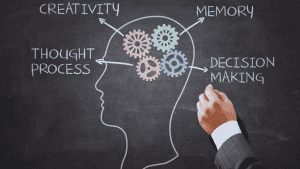New Technologies
New technology platforms, especially Software as a Service (SAAS), are ubiquitous and new ones are being produced at a rate that we have not seen before. We have all heard the term Artificial intelligence (AI) but what does this have to do with HR? AI is becoming a part of most new age technologies including HR according to articles in HR Today and HR Technologies.
Using AI in HR functions can help in automating repetitive and time-consuming tasks. Some of these tasks may include screening candidates, scheduling interviews, and answering candidates’ questions – (at least to a certain extent), managing payroll and learning and training
For example, using AI in the onboarding process can allow for:
- Creating employee profiles
- Providing company policies,
- Explaining job functions, duties, and benefits,
- Providing relevant and important contacts within the company, answering frequently asked questions by new employees, document verification,
- Device requests,
- and more.
Employee Well-Being
More organizations are considering employee well-being as a crucial part of productivity and performance. Highly sought-after companies are integrating approaches that address physical and mental health. Employees that are ill, injured, or dealing with personal issues like problematic relationships or financial difficulties are experiencing depression, anxiety, personality disorders, or other problems and as a result, are not going to be able to perform at their best. This may impact team productivity and cohesion, as well as customer service.
Performance
Performance Management will become a continuous and integrated process and HR technology can help by providing platforms where developmental cycles of expectation setting and providing feedback will be easier and more consistent. Performance management is critical in any organization and by using platforms where expectations can be established and easily referenced; feedback can be submitted, collected and reviewed, and where recommendations for improvement can be made will make organizations’ performance management programs more effective, efficient, and maybe a little more enjoyable.
Remote Distributed Workforce
Over the last year, many organizations were forced into making adjustments that facilitated and supported remote work. Now, with technology and the increase of work that can be done via computer, there is a surge in remote/at-home work. This trend has been in the making for some time and will continue.
According to an article in Forbes, companies like Twitter have announced that their employees may work from home forever if they choose, while some may return to their traditional work spaces if that is what they choose to do. MSN says others have extended work from home policies including Google, Microsoft, Uber, American Express, and Airbnb.
Remote Collaboration and Culture Building
As stated above, many companies are planning to continue with their remote work practices even after social distancing guidelines are rescinded so platforms like Slack, Zoom, and others will be used to ensure (to the greatest extent possible) continuity in communication and collaboration among work groups and teams.
These collaboration and communication technologies should continue to improve, enhancing the end-user experience and will be used and experimented with to increase the employee experience.
An article in People Matters suggests organizations last year did not have much time to focus on culture as they were busy implementing new systems and working on establishing and supporting their remote workforce. Now, with technology in place, the focus organizations should begin working on is building strong work cultures among their distributed workforces.
The changes that took place over the last year require organizations to instill and reinforce the values of the organization with their employees. Growth and stability within the workforce will be needed and that comes with employees sharing the same mindset and the company offering training on the culture of the organization.







